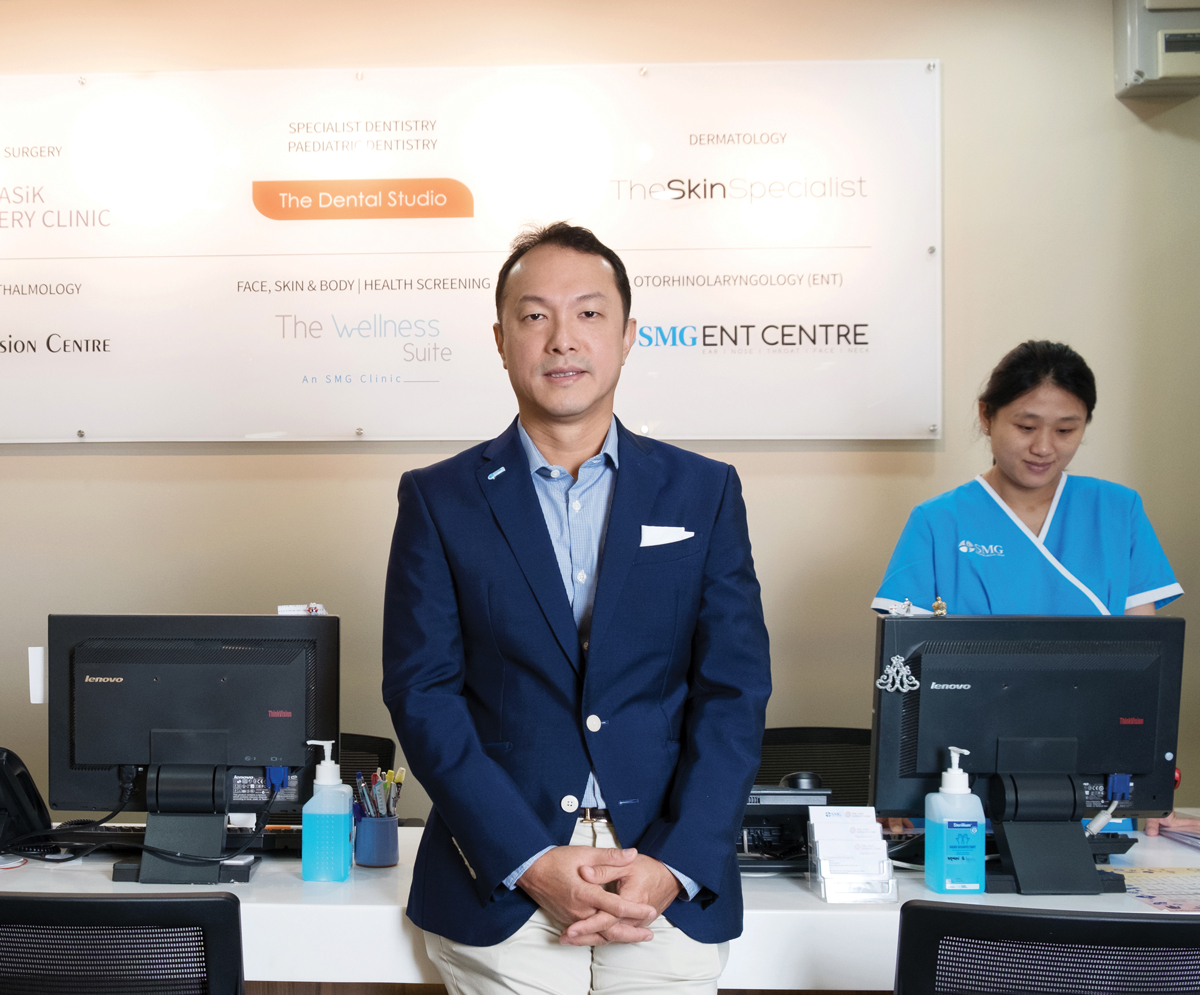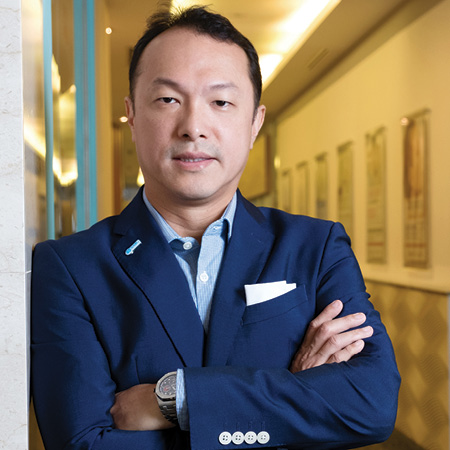With disruption revolutionising industries and occupations the world over, one that remains relatively untouched is the medical profession. It’s a situation that Singapore Medical Group is hoping to change. “The way medicine is practised is still very traditional,” says Dr Beng Teck Liang, Chief Executive of Singapore Medical Group (SMG). “I think that within the next 10 years, we’re going to start seeing much more disruption, and I hope that as a group SMG can lead some of that disruption.”
He’s keeping a close eye on the diagnostic space, for instance. “DNA diagnostics are starting to feature quite substantially around the world, and as the technology becomes more readily available we hope it’s an area where we’ll see a lot more innovation and hopefully outcomes.”
Telemedicine also has the potential to transform the healthcare industry as the trend towards convenience and home health monitoring takes hold. “We’ve already had a number of discussions geared towards exploring the possibility of introducing telemedicine into our future initiatives,” says Dr Beng, highlighting, too, that the Singapore government is already making moves towards changing some of its medical guidelines and regulations around the industry.
The group has already been testing the waters through its joint venture with Australian company Cardioscan by introducing a medical monitoring device into South East Asia. “We’ve deployed this device in Singapore initially and we’ve seen a very good take-up rate.”

The ability to spot such opportunities has a lot to do with Dr Beng’s background. His career spans management roles in both the information technology and healthcare sectors, including managing director for Hewlett-Packard (HP) Thailand and chief medical officer at Novahealth. “Being medically trained, spending more than a decade in corporate and then coming back to healthcare, I think, gives me a unique perspective on the sector.”
When he took a 20% stake in SMG in June 2013, the publicly listed company had been recording significant losses for about 18 months. “I needed to jump in and stem the bleeding, otherwise there wouldn’t be very much left to take over,” he says. “Over the course of the next few months, we stabilised the business, cut costs, encouraged the remaining doctors to stay on, and renegotiated contracts.”
He and his partner took over the company in early 2014, but the hard work was far from over. “The past 3 years have been particularly difficult. Turnarounds are never easy.” Along with cost cutting, it’s been about reinvesting in machines, people and technology. “I’ve spent the past 3 years making very significant decisions around what equipment to acquire, and I probably hired the most significant number of doctors in the private sector.”
“The company has grown significantly. We’re seeing growth rates of in excess of 30% year-on-year.” – Dr Beng Teck Liang
Technology has also figured prominently in the transformation. “When I first got into this company, I felt that healthcare was very old-fashioned and I wanted to try and drive a lot more innovation in the sector using technology where possible.” Drawing on his technology background, he introduced electronic medical records into the group and a web-based, cloud-based radiology information system (RIS) and picture archiving and communication system (PACS). “That puts us in a unique position to be able to deliver the quality and scalability of services that we want to try and achieve.”
In September 2015, the group acquired diagnostic radiology company Lifescan Medical, and in April 2016 Novena Radiology. “By combining those 2 companies, we became a very significant diagnostic radiology player in the marketplace.” The combined business was wholly integrated into SMG by September 2016, an achievement that will be reflected in the company’s upcoming results. “The company has grown significantly,” says Dr Beng. “We’re seeing growth rates of in excess of 30% year-on-year.” Looking ahead, the group will continue to build on its 4 major pillars (women’s health, oncology, ophthalmology and diagnostic imaging) in the next 12–18 months. The later step will involve looking at how it can expand its footprint beyond Singapore to other centres in the region.
Dr Beng points to the Ciputra SMG Eye Clinic in Jakarta, Indonesia, a joint venture with Ciputra. “We’re excited about that because we’re bringing the best technologies, processes, training, and our expertise in the sector to provide localised capabilities.”
The group is also looking “aggressively” at markets that generate a large proportion of its overseas patients. A focus is on Vietnam, where earlier this year it announced a significant investment to enhance the overall healthcare quality in the region and drive awareness of the brand.

